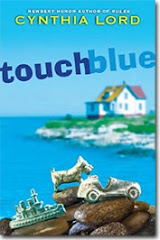Dear Sleuths,
When Allyson and I met to discuss Turtle in Paradise, we were surprised to note the number of similarities between it and our July book, Karen Cushman’s Alchemy and Meggie Swann. Sure, a few hundred years and the Atlantic separate them in terms of setting. But look at how both books start: in each, the protagonist—a girl on her own—is sent away by her mother to live in a strange and unfamiliar location with relatives who don’t really want them. Furthermore, each girl is a smart, sharp-tongued character who must find a way to survive in difficult circumstances.
Prickly Characters
In fact, Turtle and Meggie Swann share a common outlook: they are brutally honest, funny, independent thinkers who come off as outspoken, impertinent, cranky or sensitive, depending on the moment. While I wouldn’t necessarily like to have either one as a houseguest (at least not the way they act at the beginning of the books), I do end up rooting for both. And from a writing point of view, let’s face it: given where the two characters start, the changes they go through as they find friends and establish themselves create a highly satisfying character arc.
Every writer wants to show character growth, so it’s not unusual to start a book with a character who has a little attitude. That attitude can go too far, of course. Once, when I shared a manuscript at an editorial conference, an agent cautioned me against making my character too sarcastic and snarky. So I started wondering how Jennifer Holm gets us to root for Turtle despite her “hard shell” (p. 99).
Bonding Time
In the book Plot and Structure, writer James Scott Bell says, “After conceiving a compelling Lead character, you must go a step further and figure out how to create an emotional bond with the reader” (p. 65). One tool authors can use is sympathy.
In contrast to mere empathy, sympathy intensifies the reader’s emotional investment in the lead… There are four simple ways to establish sympathy. Choose wisely. Don’t overload them, as it may make the reader feel manipulated. (p. 66)
Bell’s four ways of establishing sympathy are: jeopardy, hardship, the underdog, and vulnerability. Let’s take a look at each.
Jeopardy
Bell writes, “Put the hero in terrible, imminent trouble.” Turtle is traveling to Key West without her mother, and when she arrives, her aunt Minnie is shocked to see her. When Minnie learns that Turtle is supposed to stay with her indefinitely, she exclaims, “As if I don’t have enough already with three kids and a husband who’s never home” (p. 19). Any reader will sympathize with Turtle’s position as an unwanted burden.
Hardship
“If the Lead has to face some misfortune not of her own making, sympathy abounds,” Bell says. Turtle faces plenty of hardship, from her mother’s current and former employers, to the realities of the Depression. Life hasn’t been easy for Turtle, which goes a long way to explain her jaded outlook.
The Underdog
Says Bell: “America loves people who face long odds.” Turtle is the underdog in her new home. She’s the only girl among a gang of boys, a newcomer in a well-established community, and she is completely unaware of her extended family’s dynamics. Aunt Minnie’s son Beans is unfriendly at the start, describing Turtle as “some freeloading cousin from New Jersey” (p. 27). The boys won’t even let her join the Diaper Gang because she’s a girl. When Turtle succeeds in tricking the ice cream man into giving her a free scoop—something Beans fails at doing—the reader can’t help but cheer for Turtle.
Vulnerability
According to Bell, “Readers worry about a Lead who might be crushed at any time.” Turtle is vulnerable because fundamentally, she is a kid on her own. She and her mother have moved around a lot, dependent on working for fickle wealthy employers. Not only that, but Turtle’s mother, Sadiebelle, is less practical than her daughter. “Mama’s good at looking at the sunny side of life,” Turtle says early in the book. “Mama’s watched so many pictures that she believes in happy endings” (p. 10). Later, Turtle thinks “I don’t know what she’d do without me to figure things out” (p. 94). Turtle believes she must take care of her mother—and to make matters worse, Turtle doesn’t have a father to help out. No wonder she longs for the stability of a home (the Bellewood) and the security of a father in Archie.
Holm succeeds in establishing Turtle as a sympathetic character, despite her churlishness. Ultimately, the overarching question the reader has throughout Turtle in Paradise is “Will Turtle be ok?” The details that Holm reveals about Turtle’s family and background help the reader to see that Turtle is like her namesake. As Uncle Vernon says, “You know, the thing about a turtle is that it looks tough, but it’s got a soft underbelly” (p. 100).
And as for Turtle’s snappiness? Her impertinent remarks? Her witty comebacks? The things she thinks and says—the things I’d never say for fear of being impolite—those are the very things that show Turtle’s spunk and independence. While I sympathize with her situation, I like her humor, her attitude, and the fact that she says what she thinks.
StorySleuths Tip #97: Help readers sympathize with a prickly character by revealing her “soft underbelly” but also make sure to show the character’s spirit and spunk.









